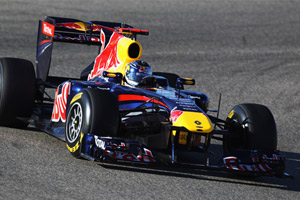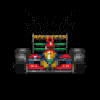Not really.horse wrote:Right so the tyre generates cornering force because it slips, right?
The term slip is a bit misleading in this context because it is more related to the deformation of the rubber than sliding movement of the rubber on the tarmac.
The contact area stays still on the tarmac for an instance while the wheel is turning but the rubber deforms in relation to the rim. By this you get some difference in wheel rotations and travelled longitudinal distance when you think of acceleration. This means for a given wheel rotation and a given wheel diameter your car travels a slightly smaller distance than calculated with a complete stiff tire.
Or when you think of cornering you get a difference between the direction your rim points and the actuall movement. Important is to understand that this does not mean there is slip (sliding) between the rubber and the tarmac you still have static friction coefficient. Think of the chains of a tank.
The slip value can be seen as something like deformation. For a given lateral force you will have a given deformation unless you change the stiffness of the tire. So more downforce -> more cornering force -> higher deformation/slip angle.Now, the more downforce you apply to the tyre, the more cornering force it will generate for a given amount of slip.
What you do have is a drop of friction coefficient when you put more load on the tire.
Some years ago I put a quite good explanation of it on this forum. Maybe I search for it later.
No. See above.Slip = wear due to friction, sort of rubbing an eraserover a piece of paper.



